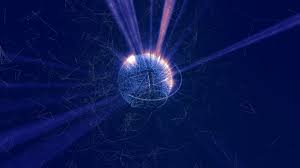Source: analyticsinsight.net
Looking at quantum computing-fueled applications of the future, we much of the time look to the innovation’s capability to take care of computationally-intensive mathematical problems, which could lead to breakthroughs in drug discovery, logistics, cryptography, and finance.
A research paper by Bernhard Dieber and different scholastics entitled Quantum Computation in Robotic Science and Applications, researches how quantum computing could augment numerous operations where robots are confronted with intensive computational assignments, where commonly broadly useful GPUs have been utilized to deal with intensive tasks.
While we may not see the appearance of quantum-fueled robots in the coming decade, the paper refers to how the rise of cloud-based quantum computing services and even quantum co-processors (QPUs) could work coupled with traditional CPUs to propel the improvement of much increasingly powerful and smart robots.
Australian physicists state they have adapted methods from autonomous vehicles and robotics to effectively evaluate the performance of quantum gadgets. A University of Sydney team reports that its new methodology has been indicated tentatively to outflank simplistic characterisation of these situations by a factor of three, with a lot higher outcome for increasingly complex simulated environments. Lead creator Riddhi Gupta says one of the hindrances to creating quantum computing systems to useful scale is beating the blemishes of hardware.
Qubits – the fundamental units of quantum technology are exceptionally delicate to disturbances from their environments, for example, electromagnetic noise and show performance varieties that lessen their usefulness.
To address this, Gupta and associates took strategies from old style estimation utilized in robotics and adapted them to improve hardware performance. This is accomplished through the proficient automation of procedures that map both environment of and performance variations across huge quantum gadgets.
Conventional AI, as opposed to current machine learning applications, depends on formal knowledge representations like rules, realities and algorithms so as to improve the robot behavior or copy intelligent behavior.
Artificial intelligence applications are as often as possible utilized in robotics technology, similar to path planning, the derivation of goal-oriented action plans, system diagnosis, the coordination of different specialists, or thinking and reasoning of new knowledge. A significant number of these applications use varieties of ignorant (visually impaired) or informed (heuristic) search algorithms, which depend on crossing trees or diagrams, where every node represents a potential state in the search space, associated with further follow-up states.
Quantum computing can fill in as an option for pretty much every search algorithm utilized in robotics and AI applications and decrease unpredictability. For graph search, for instance, there is a quantum alternative based on quantum random walks.
In robotics, Gupta says, machines depend on simultaneous localisation and mapping (SLAM) algorithms. Gadgets like automated vacuum cleaners are ceaselessly mapping their surroundings and then evaluating their area within that environment so as to move. The trouble with adjusting SLAM algorithms to quantum frameworks is that if you measure, or characterise, the performance of a solitary qubit, you obliterate its quantum data.
Gupta has built up a versatile algorithm that measures the performance of one qubit and utilities that data to assess the capacities of nearby qubits. “We have called this Noise Mapping for Quantum Architectures.,” she says. “Instead of gauging the old-style environment for every single qubit, we can automate the procedure, lessening the number of estimations and qubits required, which accelerates the entire procedure.”
Efforts have been made as of late to illuminate old-style automated tasks utilizing AI as another option. In the quantum domain, quantum neural networks could help take care of issues related with kinematics, or the mechanical movement of robots.
There are reports that state how the two degrees of control in robotics, abstract task-planning, and specific movement-planning which are presently illuminated independently, can be explained in an increasingly integrative way with quantum computing.
Quantum computing could play an important job in enhancing the development of machines, including identifying moments of inertia and joint friction. Such difficulties could be addressed with quantum reinforcement learning, with models that can develop themselves, and with “hybrid quantum-classical algorithms.”

 Starting: 1st of Every Month
Starting: 1st of Every Month  +91 8409492687 |
+91 8409492687 |  Contact@DevOpsSchool.com
Contact@DevOpsSchool.com